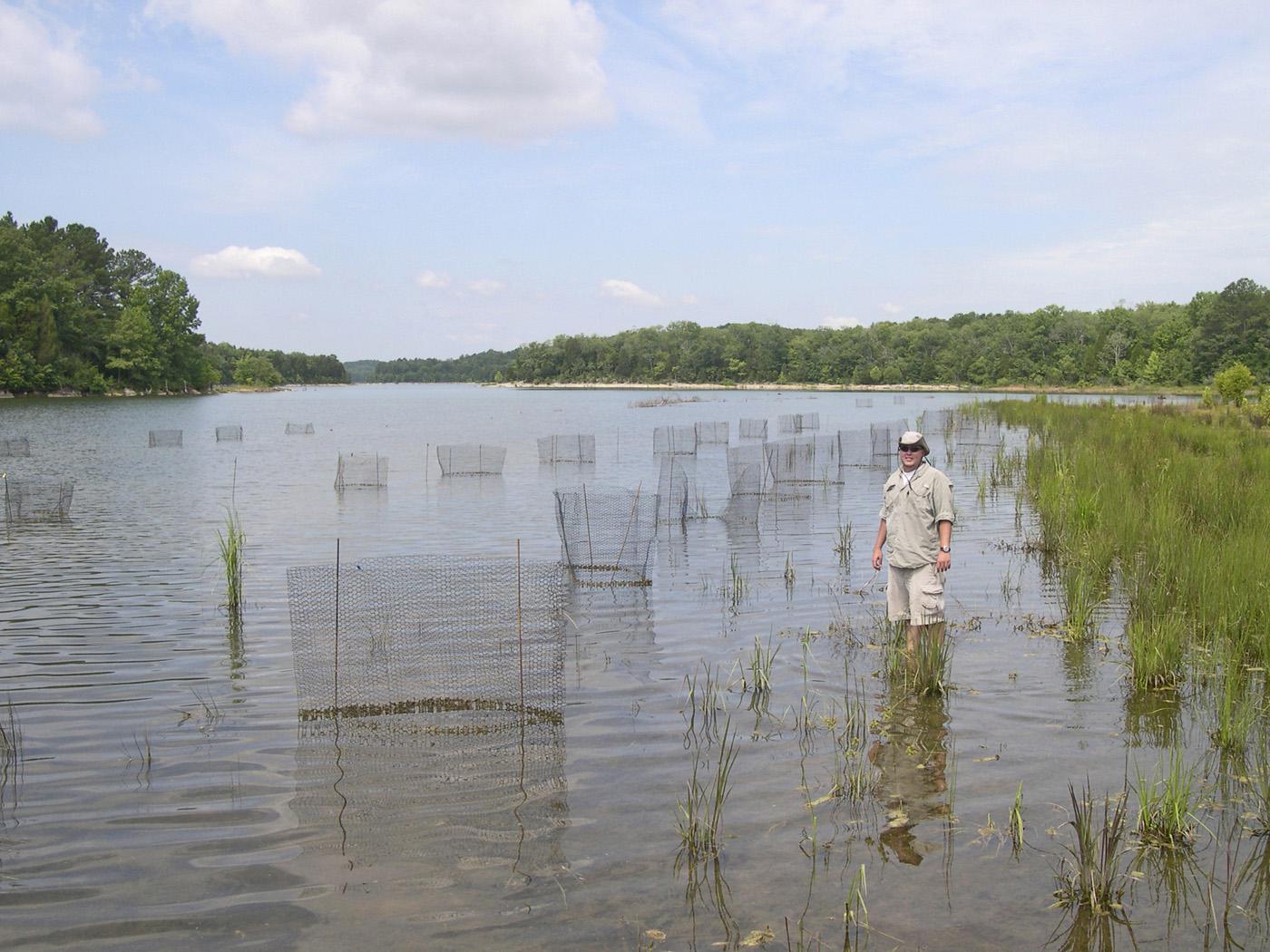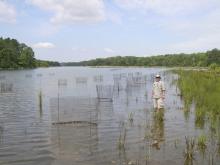Information Possibly Outdated
The information presented on this page was originally released on June 18, 2009. It may not be outdated, but please search our site for more current information. If you plan to quote or reference this information in a publication, please check with the Extension specialist or author before proceeding.
Grassy habitats improve fisheries
By Jonathan Paul Fleming and Karen Brasher
MSU College of Forest Resources
MISSISSIPPI STATE -- Many anglers have long lived by the motto “grass equals bass,” and for a bass fisherman, there is nothing more thrilling than pulling a spinner-bait along a weed edge and getting a strike.
This simple motto is being investigated by researchers who say that the right type of vegetation in lakes and reservoirs can improve fishing opportunities.
“As long as the grass is a native form of aquatic plant that does not choke out the water in large areas of the lake, it does improve the fishery,” said Eric Dibble, wildlife and fisheries professor and fish ecologist at Mississippi State University.
Many reservoirs have grass, but they do not have the native aquatic plants needed, as was the case with the Little Bear Creek Reservoir in northwest Alabama.
To improve the reservoir and fisheries, scientists in MSU’s Forest and Wildlife Research Center and Geosystems Research Institute began working with a local conservation group, the Bear Creek Millennium Project, to re-establish aquatic vegetation. Additional funding was provided by the Alabama Department of Conservation and Natural Resources.
“In natural lakes, aquatic plants establish a seed bank so that sudden environmental changes do not disrupt the natural cycle of plant growth,” Dibble said. “However, in man-made reservoirs like Little Bear, often the seed bank is not present or is not well established. Sometimes important aquatic plants need some help in becoming established to keep the lake productive.”
Aquatic plants form the basis of the food chain and are self-renewing, unlike man-made structures such as stake-beds or sunken dead trees, which rot after only a few years. Not only do these plants improve recreational fishing opportunities, they also improve water quality and habitat.
“Submerged vegetation is home to a large variety of aquatic insects and animals, which form a good food base for sportfish such as bluegill and largemouth bass,” Dibble said. “The fish also use these areas to hide when threats of larger predators are lurking in deeper, less protected areas.”
The plants improve water quality by stabilizing the bottom of a lake and preventing silt and mud from staining the water when boat traffic or wind causes a disturbance. But establishing this grassy fish habitat can be challenging. Plants that were growing in the Little Bear Creek Reservoir did not survive over a long period of time.
Phillip Cooper, leader of the Bear Creek Millennium Program, contacted the university about assisting with the project.
“Our group largely consists of fishermen looking to improve habitat in the Bear Creek Lakes,” Cooper said. “We knew from the beginning, to improve habitat and fishing, you must get plants back into the lake. That is why we contacted MSU, to make sure we were doing the right things to make our lakes better.”
Wildlife and fisheries graduate student Jonathan Paul Fleming began by planting several different plants in the lake. His objective was to identify the species that would grow the best.
“We want to make sure we are as efficient as possible so that we are not wasting time with species that just won’t make it,” said John Madsen, principal investigator and assistant professor in MSU’s Geosystems Research Institute. “Once we establish the right plants for the reservoir, we will increase the rate of planting.”
Some anglers and recreationists do not always appreciate aquatic plants because they form thick mats that can block boat channels and docks, but this usually occurs only with exotic invasive plants, Madsen said.
“Although some anglers like to fish in any type of vegetation, it is important to realize there are some plants and invasive species that can actually hurt fishing,” Madsen said. “That is why we are working with several native species to determine what works best in the reservoir.”
Once established, the aquatic vegetation will provide great fishing opportunities and habitat at Little Bear Creek Reservoir.




